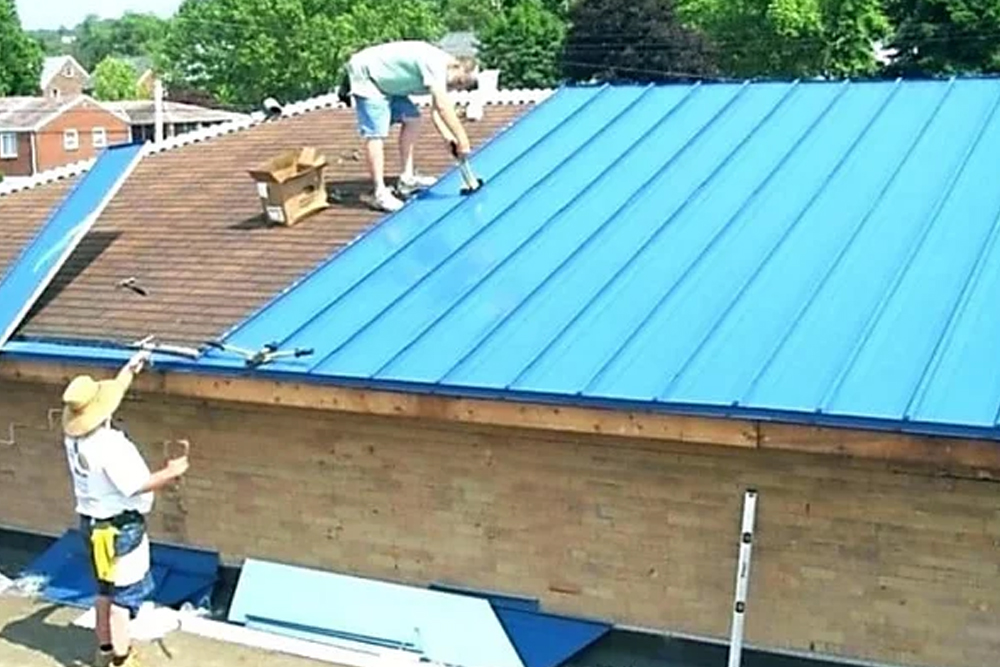Sandwich Panels for Roofing Applications Guide
Sandwich panels have become increasingly popular in modern roofing applications due to their unique construction and performance characteristics. These engineered building materials consist of two outer layers bonded to a lightweight core, creating a structural element that offers superior strength-to-weight ratios compared to traditional roofing materials. Understanding their composition, benefits, and proper maintenance can help property owners make informed decisions about their roofing needs.

What are sandwich panels and how are they used
Sandwich panels are composite building materials featuring two thin, strong outer layers separated by a lightweight core material. The outer layers, typically made from materials like steel, aluminum, or fiber cement, provide structural strength and weather resistance. The core materials commonly include polyurethane foam, polystyrene, mineral wool, or honeycomb structures that deliver insulation properties and structural stability.
In roofing applications, these panels serve multiple functions simultaneously. They act as the structural deck, insulation layer, and weather barrier in a single component. This integration simplifies installation processes and reduces the number of separate materials needed for a complete roofing system. The panels connect through interlocking edge profiles that create continuous, weatherproof surfaces across large spans.
How sandwich panels improve energy efficiency
The energy efficiency benefits of sandwich panels stem from their continuous insulation layer embedded within the panel structure. Unlike traditional roofing systems where insulation may have gaps or thermal bridges, sandwich panels provide uninterrupted thermal barriers that significantly reduce heat transfer through the roof assembly.
The core materials in these panels achieve high R-values while maintaining relatively thin profiles. Polyurethane foam cores, for example, can provide R-values ranging from R-6 to R-8 per inch of thickness. This thermal performance helps maintain consistent indoor temperatures, reducing heating and cooling loads throughout the year. Additionally, the continuous insulation minimizes condensation risks by eliminating thermal bridging that can occur with conventional framing methods.
Modern sandwich panels also contribute to overall building envelope performance by creating airtight roof assemblies. The interlocking connections between panels, when properly installed and sealed, create continuous air barriers that prevent unwanted air infiltration and exfiltration.
Maintenance tips for sandwich panels
Regular inspection and maintenance ensure optimal performance and longevity of sandwich panel roofing systems. Property owners should schedule biannual inspections to check for any signs of damage, wear, or deterioration. Focus particular attention on panel connections, fasteners, and any penetrations through the roof surface.
Cleaning procedures involve removing debris, leaves, and other materials that might accumulate on the roof surface or in drainage areas. Use mild detergents and soft-bristled brushes to avoid damaging protective coatings on the panel surfaces. Avoid using pressure washers at close range, as high-pressure water can compromise seals or damage surface finishes.
Monitor the condition of any sealants or gaskets used at panel joints, penetrations, or edge conditions. These components may require periodic replacement as they age and lose their flexibility. Address any loose fasteners promptly, as they can create potential leak points or allow wind uplift forces to affect panel performance.
Installation considerations for roofing projects
Professional installation plays a crucial role in maximizing the benefits of sandwich panel roofing systems. Proper structural support must be verified to accommodate the panel loads and spans. While sandwich panels are lightweight compared to many traditional roofing systems, they still require adequate structural framing designed according to local building codes and manufacturer specifications.
Weather conditions during installation affect the quality and longevity of the completed roof system. Temperature variations can cause thermal expansion and contraction in the panels, which installers must account for when positioning and fastening the components. Wind conditions also influence installation procedures, as large panels can be difficult to handle safely in high wind situations.
Performance characteristics and applications
Sandwich panels offer excellent structural performance for various roofing applications, from residential to large commercial and industrial buildings. Their high strength-to-weight ratios allow for longer spans between structural supports compared to traditional roofing materials. This capability can reduce overall structural costs while providing design flexibility.
Fire resistance properties vary depending on the core materials used in the panels. Mineral wool cores provide excellent fire resistance characteristics, while some foam cores may require additional fire protection measures depending on building code requirements and occupancy classifications. Understanding these performance characteristics helps ensure appropriate panel selection for specific applications.
The durability of sandwich panels depends largely on the quality of the outer layer materials and protective coatings. High-quality metallic outer layers with proper coating systems can provide decades of service life with minimal maintenance requirements. Factory-applied finishes typically offer superior consistency and adhesion compared to field-applied coatings.
Sandwich panel roofing systems continue to evolve with advancing materials technology and manufacturing processes. Their combination of structural performance, thermal efficiency, and installation convenience makes them attractive options for many roofing applications. Proper selection, installation, and maintenance ensure these systems deliver their intended benefits throughout their service lives.




